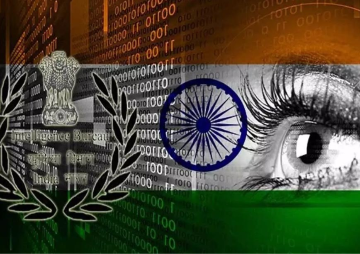Three years have passed since the global financial crisis hit the world, but the US, from where the crisis started, has not recovered fully. The US is facing problems of slow growth, low inflation and 9.5 per cent unemployment. Its economic woes are leading to the unpopularity of President Barack Obama, who was elected with great fanfare in 2008. He promised to bring back jobs but has not been able to do so, and people are still waiting for a robust economic revival.
To counter the recessionary tendencies, the US government went in for easy monetary policy involving a low interest rate regime; it also came up with its $ 1.7 trillion rescue package aimed at reviving demand. It has recently announced a policy called quantitative easing that involves the government buying $600 billion worth of Treasury Bonds by the middle of next year and thereby infusing $75 billion per month in the international financial system.
Such an increase in dollars in the world will lead to the emerging market countries’ (India, Brazil, China) currency values going up in terms of the dollar as short-term investible funds from the US will head for buoyant markets.
Already China and India are facing hardening of the yuan and the rupee against the dollar. China has refused to revalue the yuan because it would hurt its exports. India’s exports will be affected if the rupee continues to rise against the dollar. India’s export competitiveness may also be affected due to inflation as all product prices will go up sooner or later owing to higher input costs.
To fight inflationary pressure, the RBI has for the sixth time raised the repo and reverse repo rates. This rise in repo and reverse repo rates by another 0.25 per cent ( to 6.25 per cent and 5.25 per cent respectively) will mean higher interest rates and will attract more foreign institutional investment (FII) funds, leading to too much liquidity in the system that would stoke inflation. Yet India is slated to grow faster than the countries of the European Union like Spain, Ireland and Greece - the entire EU is slated to grow at 2.3 per cent.
There is likely to be slow GDP growth in these countries and a rise in unemployment. The bailout package that the EU announced with the IMF aid $1 trillion may be enough to tide over the budgetary woes of countries like Greece temporarily, but unless the GDP grows faster, there will more job losses. Their demand for exports from India may be affected if the EU’s growth remains sluggish. Basically productivity has to go up in these countries of which there are few signs.
India has recovered from the financial crisis at a faster speed because Indian banks did not have significant amounts of “toxic assets” in their portfolios. The financial crisis manifested itself in India through a fall in exports, especially from the medium and small-scale sectors and loss of employment in export-intensive industries like diamond cutting, garments, handicrafts and leather goods. Within a year, due to the three fiscal packages of the government, there has been a revival in domestic demand, an increase in investment in infrastructure and a rise in GDP growth from 6 to 8 per cent.
Industrial growth also fell as a result of the global crisis in 2008-09, but since 2010 it has revived. Certain sectors like automobiles, consumer durables and capital goods have done well, and industrial growth revived in July 2010 to 16.3 per cent. Unfortunately, the sustainability of industrial growth is not certain as the impact of inflation is becoming more apparent.
Another fallout of the crisis was the sudden withdrawal of a huge amount of FII funds from the Indian financial markets. The outflow of FIIs created a vacuum in the beginning of 2008 which was rectified by the RBI by its loose monetary policy through which it succeeded in injecting liquidity in the financial system. But inflation, which was negative in 2009, slowly picked up as a result. Food inflation, on the other hand, kept rising due to the monsoon deficit in 2009 and is still at 12.8 per cent.
Hike in interest rates since March 2009 to control inflation and higher growth prospects by the RBI has attracted huge amounts of FII inflows, leading to a rise in the sensex to above 20,000. Apart from other factors, India is one of the most attractive destinations for parking short-term hedge funds. The uncertainty and volatility of short-term capital inflows into Indian markets remain a risk and worth worrying about.
Important to India’s GDP growth is the services sector growth as it contributes 58 per cent to the GDP. In service exports, India remains vulnerable because of its dependence on Western markets. Outsourcing of services from the US is of great concern to the US administration and President Obama is bent on saving jobs. But unless the service sector remains vibrant in India, there may be problems in the future. With the hardening of the rupee, the competitiveness of this sector has also been affected.
Despite the problems of the Western countries, India and China are still striding ahead and, according to both the IMF and the World Bank, the growth trajectory will remain high for both, with China probably achieving 10 per cent growth and India 8.5 per cent. The macro-economic indicators are showing positive signs in India except for the setback in industrial growth. Housing and real estate sector has stabilised and the RBI has raised the loan rates for housing. Inflation control is the main concern of the monetary policy now and if it is successful, India will manage to come out of the global crisis relatively unscathed, and there may be hopes for more inclusive growth.
But Western countries’ protectionism is reappearing in the horizon and if it takes shape in covert or overt forms, there will be problems for countries like India. In shielding their currencies from market influences, many countries’ actions are reminiscent of protectionism in the pre-World War II days. India needs to rethink its strategy also about opening up FDI (retail and defence) and agriculture further to accommodate the demands of the EU and the US in which our own interests, specially those of the vulnerable sections like small and marginal farmers and small retail traders are involved.
Agriculture is one area in which the US wants a level-playing field. As the world is recovering from the financial crisis, new rules are being set for the benefit of those who have not done well. India and China have to watch out against the neo-protectionist policies of the West.
(Dr. Jayshree Sengupta is a Senior Fellow with Observer Research Foundation)
Courtesy: The Tribune
The views expressed above belong to the author(s). ORF research and analyses now available on Telegram! Click here to access our curated content — blogs, longforms and interviews.




 PREV
PREV

